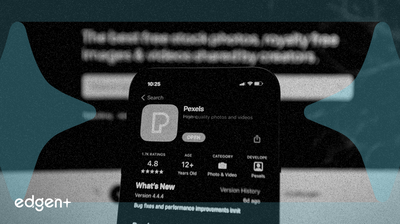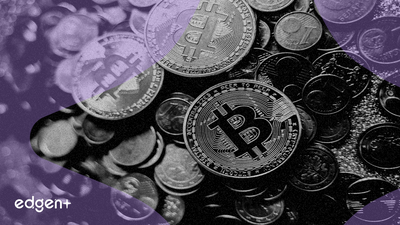Related News

RedStone Launches Credora DeFi Risk Ratings Following $20 Billion Crypto Liquidations
## Executive Summary Modular oracle network RedStone has launched Credora, a decentralized finance (DeFi)-native risk ratings platform, aiming to enhance transparency and credit analytics for lending protocols following a recent $20 billion crypto market liquidation event. ## The Event in Detail RedStone, a modular oracle network, announced the launch of Credora, a DeFi-native risk ratings platform. This initiative seeks to introduce enhanced transparency and credit analytics to decentralized lending protocols. Credora by RedStone integrates directly with prominent DeFi lending markets, specifically **Morpho** and **Sparks**, to deliver dynamic risk scores and default-probability analytics. These analytics are accessible through a dedicated API, providing a structured approach to risk evaluation. The development of Credora follows RedStone's acquisition of Credora in September, which expanded its capabilities beyond traditional price feeds into broader credit, collateral, and risk intelligence. The platform consolidates creditworthiness data, default probabilities, and collateral analytics into a unified ratings layer. Notably, Credora's technology utilizes zero-knowledge proofs to facilitate secure credit ratings for over $1 billion in uncollateralized loans, ensuring data privacy while maintaining assessment integrity. RedStone co-founder Marcin Kaźmierczak stated that this launch represents a significant stride towards the "Low-Risk DeFi" movement, balancing yield generation with verifiable, data-driven transparency. ## Market Implications The introduction of Credora addresses a critical need for robust risk management within the DeFi ecosystem, particularly highlighted by a recent liquidation event where nearly $20 billion in crypto positions were wiped out across major exchanges like **Hyperliquid**, **Bybit**, and **Binance**. This event, described as a liquidity shock, exposed structural fragilities in crypto markets. Credora aims to mitigate such risks by providing granular insights, enabling users to compare vault and loan positions on platforms like **Morpho** by relative risk scores. This increased transparency and standardized risk assessment are anticipated to attract greater institutional investment into DeFi. Company data cited by RedStone indicates that DeFi strategies carrying a rating, such as **Morpho Vaults**, have experienced up to 25% faster growth compared to unrated counterparts, suggesting strong user demand for dependable risk signals. The integration plans include re-launching public ratings and shipping API integrations to propagate risk scores through RedStone's oracle feeds to protocols already utilizing its services. ## Expert Commentary Marcin Kaźmierczak, co-founder of RedStone, emphasized the platform's role in advancing the "Low-Risk DeFi" movement, stressing the importance of combining yield generation with verifiable, data-driven transparency. Darshan Vaidya, CEO and Co-founder of Credora, highlighted that while DeFi has innovated capital allocation, clear and reliable risk information has often been lacking for users. Credora's objective is to democratize institutional-grade risk analysis, making it accessible to individual DeFi participants. ## Broader Context RedStone's acquisition of Credora, a platform backed by notable entities such as **Coinbase Ventures**, **S&P**, and **HashKey**, signifies a strategic expansion into comprehensive risk intelligence. This move positions Credora by RedStone as an oracle-powered risk-rating framework for assets and yield strategies across decentralized finance, mirroring the functions of traditional credit rating agencies. By providing a single pipeline for real-time prices and real-time risk, the combined entity aims to offer a holistic view of market conditions. The platform will extend expanded coverage across 100 **Morpho** vaults and introduce new metrics to assess key risks, including depeg events and liquidity, offering users a clearer understanding of how different vaults operate under various market conditions.

Stable Pre-Deposit Error Leads to $2.34 Million Loss for Over 60 Wallets
## Executive Summary Over 60 cryptocurrency wallets collectively lost more than $2.34 million during **Stable's** second phase pre-deposit activity due to users incorrectly entering the contract address as the receiving address, impacting user confidence in the platform. ## The Event in Detail During **Stable's** second phase pre-deposit campaign, a significant error led to over 60 user wallets misdirecting funds, resulting in a total loss exceeding $2.34 million. Users mistakenly input the contract address instead of the correct receiving address for their deposits. **Stable**, a Layer 1 blockchain focused on stablecoin transactions, recently initiated its second pre-deposit campaign. This initiative allows users to deposit stablecoins, primarily **USDT**, to earn future rewards linked to the network's upcoming native token and ecosystem incentives. The first phase of this campaign saw an $825 million deposit cap reached within approximately 22 minutes. The rapid filling of Phase 1 sparked controversy, with multiple **X** users alleging front-running and "insider" participation, citing on-chain data showing large wallet clusters depositing funds prior to the official announcement. This limited retail participation and led to negative community feedback. For Phase 2, **Stable** announced measures such as a per-wallet deposit limit and individual wallet requirements to prevent large deposits from single entities, although it did not directly address the Phase 1 controversy or explicitly guarantee simultaneous access for all participants. Despite these adjustments, the recent misdirection of funds underscores persistent challenges in user interaction and communication within complex decentralized finance (DeFi) protocols. ## Market Implications The $2.34 million loss directly impacts user confidence in the **Stable** platform and raises critical questions about user error prevention mechanisms within DeFi protocols. Such incidents contribute to negative market sentiment and can deter broader adoption of new DeFi initiatives. This event occurs within a year marked by substantial losses across the crypto sector. By mid-2025, cyberattacks and scams had already cost the industry over $3.1 billion. Notable incidents include the **Balancer** exploit in November 2025, which saw over $100 million in digital assets stolen from its **V2 Composable Stable Pools** due to a rounding-error vulnerability impacting tokens like **osETH**, **WETH**, and **wstETH** across **Ethereum**, **Polygon**, and **Base**. Other significant breaches include a $1.5 billion loss by **Bybit** in Q1 and a $223 million hit in the **Cetus** exploit. Access control failures accounted for approximately 59% of funds lost, totaling $1.83 billion, while smart contract vulnerabilities contributed an additional $263 million. These figures highlight the pervasive security challenges, ranging from sophisticated exploits to fundamental user mistakes. ## Broader Context and Security Measures The ongoing series of security incidents and user-related financial losses underscores the evolving landscape of digital asset security, emphasizing the need for both technological resilience and improved user education. Industry experts consistently advocate for enhanced security and compliance measures to mitigate such risks. Recommendations include robust smart contract security practices, comprehensive risk controls, and leveraging regulatory sandboxes. Beyond standard audits, practices like formal verification and continuous code reviews are crucial. Implementing internal governance protocols to monitor unusual on-chain activities and potential exploit patterns, along with employing tools like **OpenZeppelin's SafeMath** to prevent arithmetic vulnerabilities, are considered essential for securing DeFi ecosystems. The incident with **Stable** reinforces the necessity for clear user interfaces, unambiguous instructions, and potentially built-in safeguards to prevent common user errors, alongside the more complex technical security measures.

Fomo Secures $17 Million in Series A Funding Led by Benchmark
## Executive Summary **Fomo**, a consumer cryptocurrency trading application, has successfully closed a **$17 million Series A funding round** led by **Benchmark**. This investment elevates Fomo's total capital raised to **$19 million**. The platform, co-founded by Paul Erlanger and Se Yong Park, launched in May and facilitates cross-chain trading of various crypto assets. Benchmark's participation in this round signals a notable vote of confidence in the consumer crypto trading sector. ## The Event in Detail The **$17 million Series A funding round** for **Fomo** was officially announced on November 6th. The round was spearheaded by **Benchmark**, a prominent venture capital firm, and included contributions from **140 industry leaders**. Notable individual investors included **Polygon Labs CEO Marc Boiron**, **Solana co-founder Raj Gokal**, and **former Coinbase CTO Balaji Srinivasan**. Fomo, which commenced operations in May, offers a streamlined trading experience, supporting millions of crypto assets across multiple blockchains, encompassing major coins, meme coins, and altcoins. The platform features **Apple Pay integration** for rapid account setup and trading, a **0.5% transaction fee**, and a policy of waiving gas fees. The application has demonstrated significant growth, achieving **$40 million in daily trading volume** and accumulating **120,000 users** within its initial six months. The integration of **Apple Pay** in June is identified as a catalyst for this expansion, with daily volume surging from $150,000 to $40 million. Furthermore, Fomo incorporates social trading functionalities, enabling users to observe and learn from other traders' strategies. ## Market Implications The investment by **Benchmark** in a consumer-focused crypto trading application suggests an increasing institutional comfort and interest in the digital asset market, particularly in platforms that prioritize user accessibility and experience. Fomo's rapid user acquisition and substantial trading volume highlight a robust demand for intuitive and efficient cryptocurrency trading solutions. The platform's strategic emphasis on **cross-chain trading** capabilities and the elimination of **gas fees** directly addresses key operational hurdles for users, which could contribute to broader market adoption. The incorporation of **social trading features** positions Fomo to leverage the growing trend of community-driven investment within the crypto space, drawing parallels with platforms that offer copy trading. This significant funding is expected to bolster Fomo's expansion strategies, enhance its service offerings, and attract a larger user base, thereby contributing to increased overall trading activity across the crypto market. ## Expert Commentary While direct public statements from the participating investors regarding their rationale for the investment are not provided, the involvement of figures such as **Marc Boiron**, **Raj Gokal**, and **Balaji Srinivasan** implicitly signals an endorsement of Fomo's business model and the broader potential of consumer-centric crypto applications. Benchmark's decision to lead this Series A round, characterized in reports as a "rare crypto investment" for the firm, further underscores a strategic belief in Fomo's market approach and its growth trajectory. ## Broader Context Fomo's successful fundraising round reflects a wider trend of innovation within the **Web3 ecosystem**, with a particular focus on improving user experience and accessibility. The integration of established payment methods like **Apple Pay** exemplifies a strategy aimed at bridging the gap between traditional financial systems and decentralized applications, thereby lowering entry barriers for new participants. This development could encourage other venture capital firms to explore and invest in the consumer crypto sector, especially in applications that demonstrate clear product-market fit and strong growth metrics. The platform's emphasis on social trading and facilitating informed decisions through observing others' strategies indicates a market shift towards more collaborative and transparent trading environments.
